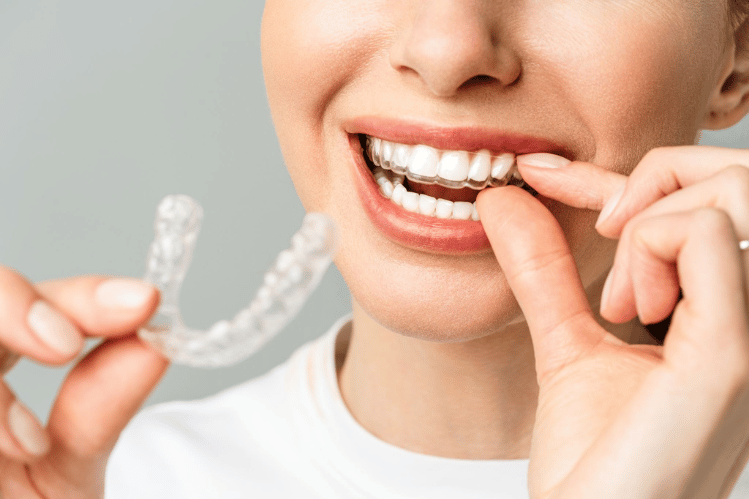Not known Details About Legacy Orthodontics
An orthodontist is a dental practitioner trained to identify, protect against, and deal with teeth and jaw irregularities. They remedy existing problems and are educated to determine troubles that may create in the future. Orthodontists collaborate with people of all ages, from youngsters to grownups. People commonly link an ideal smile with health.
Malocclusion, or misaligned teeth, can bring about oral concerns, including tooth decay, gum tissue disease, and hard or agonizing chewing. Not everyone is born with straight teeth. If you have a poor bite or large rooms in between your teeth, you might intend to seek advice from a dental practitioner focusing on orthodontic treatment.
The Ultimate Guide To Legacy Orthodontics
( Photo Credit History: DigitalVision/Getty Images) Orthodontists use dealt with and detachable dental gadgets, like braces, retainers, and bands, to change the position of teeth in your mouth. Orthodontic therapy is for oral problems, including: Misaligned teethBite troubles, like an overbite or an underbiteCrowded teeth or teeth that are also far apartJaw misalignmentThe objective of orthodontic therapy is to improve your bite.
A healthy and balanced bite ensures you can consume, eat, and speak effectively. While you may believe of orthodontists as mainly for youngsters or teens that need dental braces, they can fix oral issues at any age. Orthodontists go to college, dental school, and orthodontic college. After graduation, they spend 2 or 3 years in an orthodontic residency program.
, yet not all dentists are orthodontists. They concentrate on two areas: Just how to correctly and securely relocate teeth Exactly how to properly lead growth in the teeth, jaw, and faceOnce an orthodontist has finished training, they have the option to end up being board accredited.
Getting The Legacy Orthodontics To Work
Imbalance, or malocclusion, is the most common reason people see an orthodontist. It is genetic and is the outcome of size differences in between the top and reduced jaw or in between the jaw and teeth. Malocclusion leads to tooth congestion, a misshapen jaw, or irregular bite patterns. Malocclusion is usually treated with: Your orthodontist attaches steel, ceramic, or plastic square bonds to your teeth.
If you have just small malocclusion, you might have the ability to utilize clear dental braces, called aligners, rather than standard dental braces (https://linktr.ee/brianmccune20176). Some people need a headwear to aid move teeth into line with pressure from outside the mouth. After braces or aligners, you'll need to put on a retainer. A retainer is a customized device that maintains your teeth in area.
They're most commonly used on children. They can develop additional area in the mouth without having to pull teeth. If you have a major underbite or overbite, you may need orthognathic surgical treatment (also called orthodontic surgical procedure) to lengthen or reduce your jaw. Orthodontists utilize cords, medical screws, or plates to sustain your jaw bone.
You may need to see an orthodontist if you have: Crowding or otherwise adequate room for all of your teethOverbite, when your upper teeth come your base teethUnderbite, when your base teeth are as well far forwardSpacing or concerns with gapsCrossbite, which is when your top teeth fit behind your bottom teeth when your mouth is closedOpen bite or an upright void in between your front base and top teethMisplaced midline, when the facility of your bottom and top teeth do not align Dealing with an oral malocclusion can: Make biting, eating, and talking easierImprove the symmetry of our face and your total appearanceEase pain from temporomandibular joint conditionsSeparate your teeth and make them easier to clean up, assisting protect against tooth decay or tooth cavities It's frequently a dental professional who first notifications misaligned teeth during a routine examination.
Rumored Buzz on Legacy Orthodontics

During your first orthodontic consultation, you'll likely have: A dental examPhotos taken of your face and smileDental X-raysPanoramic (360 degree) X-rays of your face and headImpressions more information to produce molds of your teethThese examinations will assist your orthodontist understand just how to proceed with your treatment. orthodontics. An orthodontist is a dental practitioner that's had training to treat your teeth and jaw
Orthodontists may execute surgery, exams,X-rays,and more to assist you acquire an extra comfortable, healthier smile. An orthodontist is focused on your bite, so something like a chipped tooth would be managed by a dental practitioner. Orthodontists are dental practitioners yet not all dental practitioners are orthodontists. Orthodontists are focused on your bite, or the way your teeth fit together, and the straightness of your teeth.
Ever wondered exactly how stars constantly seem to have flawlessly aligned teeth? Orthodontists are oral experts that concentrate on remedying irregularities in the teeth and jaws.
Indicators on Legacy Orthodontics You Need To Know

, orthodontists have a varied toolkit at their disposal. These reliable dental braces utilize a system of brackets adhered to the teeth and linked by cables.
Clear aligners, like Invisalign, are a preferred option for individuals looking for an extra discreet treatment choice. These detachable trays are personalized to progressively move the teeth's position. Headgear might be utilized in conjunction with dental braces or aligners to use additional targeted pressures, especially for remedying jaw inconsistencies. In cases of slim jaws, palatal expanders can be used to create area for appropriate tooth positioning.
Comments on “The 6-Second Trick For Legacy Orthodontics”